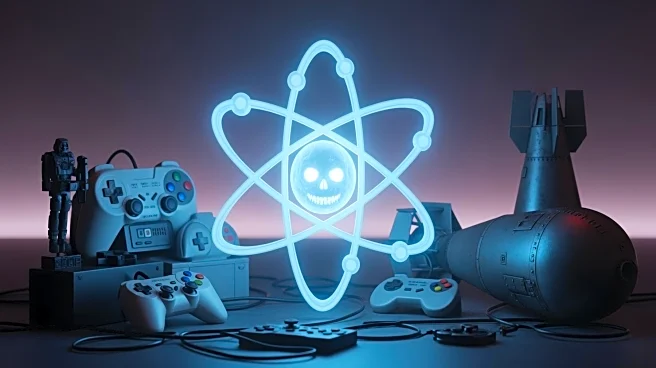What's Happening?
Bruce Nesmith, a former designer at Bethesda, has expressed his views on the company's space-themed RPG, Starfield, which launched in 2023. Nesmith, who worked on Starfield until a year before its release,
believes the game did not meet the high standards set by previous Bethesda titles like Fallout and Skyrim. He attributes this to the game's reliance on procedurally generated planets, which he feels did not provide the engaging environments that players expect from Bethesda's hand-crafted settings. Despite respectable sales and an expansion release, Starfield has not achieved the same level of fondness as its predecessors. Nesmith suggests that the game's reception might have been different if it had been released by a company other than Bethesda.
Why It's Important?
The critique from a former Bethesda designer highlights the challenges faced by game developers in balancing innovation with player expectations. Starfield's reliance on procedural generation, a method that creates content algorithmically rather than manually, was intended to offer vast exploration opportunities. However, it seems to have resulted in less engaging gameplay compared to the detailed worlds of Fallout and Skyrim. This feedback is significant for the gaming industry as it underscores the importance of crafting immersive environments that resonate with players. It also reflects on the expectations placed on established studios like Bethesda to deliver groundbreaking experiences.
What's Next?
While Nesmith's comments provide insight into Starfield's reception, they also suggest potential areas for improvement in future Bethesda projects. The company may need to reconsider its approach to procedural generation and focus on creating more diverse and compelling environments. This could influence the development of upcoming titles, including potential sequels or expansions. Additionally, the feedback may prompt Bethesda to engage more with its community to better understand player preferences and expectations.
Beyond the Headlines
Nesmith's critique raises broader questions about the role of procedural generation in game design. While it offers scalability and variety, it may not always align with the narrative and experiential goals of a game. This discussion could lead to a reevaluation of how procedural techniques are integrated into game development, potentially influencing industry standards and practices.











